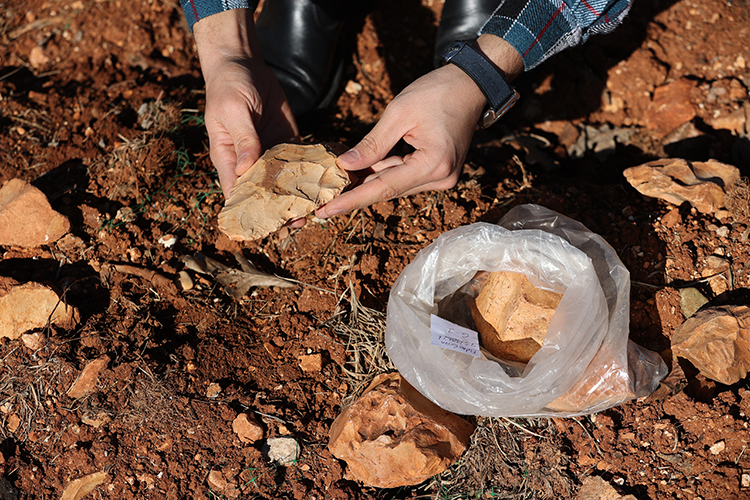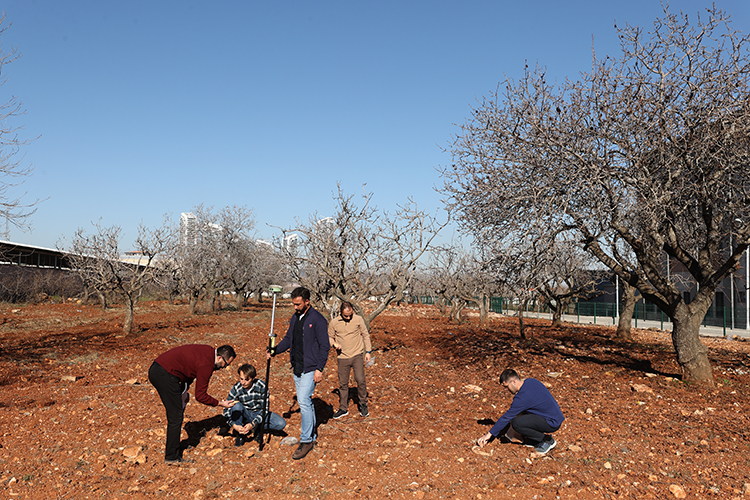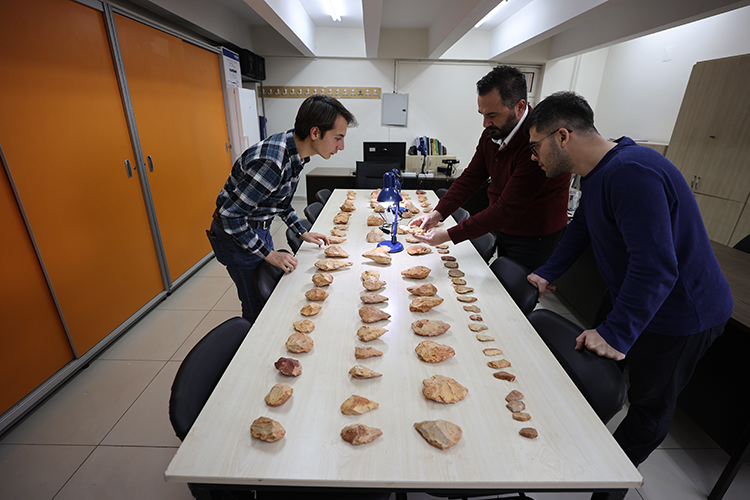
8,200 artifacts from the Paleolithic period were discovered on a university campus in Turkey
Experts working in a pistachio orchard on the campus of Gaziantep University unearthed 8200 Paleolithic artifacts.
The survey work in the pistachio garden started in 2021 with the permission of the Ministry of Culture and Tourism.
During the research conducted under the direction of Gaziantep Museum Directorate, 8,200 chipped stone artifacts used in activities such as hunting in the Lower Paleolithic period were found.
Gaziantep University Faculty of Arts and Sciences, Department of Archaeology, Department of Protohistory Prof. Dr. İsmail Baykara told AA correspondent that Yunus Emre Sevindik, a graduate student, came to him with a find belonging to the Lower Paleolithic age and that they received permission from the Ministry of Culture and Tourism through Gaziantep Museum Director Özgür Çomak to study the find.

Stating that they have come to the end of the research they started in 2021 in the pistachio garden on the university campus, Baykara said:
“These findings are already known in Gaziantep. For example, similar finds were found in many studies in Dülük Baba and Nizip. Similarly, we found a large amount of chipped stone remains belonging to the Lower Paleolithic ages in the pistachio area within the university campus. Among these, especially hand axes are very characteristic. These hand axes already show us that they may be older than 300 thousand years. In the following years, hopefully, if we can find an area that remains intact, we will make evaluations and give a clear date.”
Gaziantep Museum Director Özgür Çomak stated that chipped stone artifacts were found by chance in the pistachio garden across the parking lot of the Faculty of Arts and Sciences.

Explaining that they immediately started working with Prof. Dr. İsmail Baykara for collection and rescue excavations in the area, Çomak said:
“We unearthed approximately 8,200 artifacts from the Lower Paleolithic period here. Together with the students, we are sorting and documenting these artifacts in the laboratory section of the Department of Archaeology. We will complete the inventory of all these artifacts and move them to the Archaeology Museum in Gaziantep. After we move these artifacts to the Archaeology Museum, we will present them for display and arrangement so that visitors can come and see them. These are a very dense group of artifacts. It was a time-consuming work.”
Cover Photo: AA
You may also like
- A 1700-year-old statue of Pan unearthed during the excavations at Polyeuktos in İstanbul
- The granary was found in the ancient city of Sebaste, founded by the first Roman emperor Augustus
- Donalar Kale Kapı Rock Tomb or Donalar Rock Tomb
- Theater emerges as works continue in ancient city of Perinthos
- Urartian King Argishti’s bronze shield revealed the name of an unknown country
- The religious center of Lycia, the ancient city of Letoon
- Who were the Luwians?
- A new study brings a fresh perspective on the Anatolian origin of the Indo-European languages
- Perhaps the oldest thermal treatment center in the world, which has been in continuous use for 2000 years -Basilica Therma Roman Bath or King’s Daughter-
- The largest synagogue of the ancient world, located in the ancient city of Sardis, is being restored











Leave a Reply